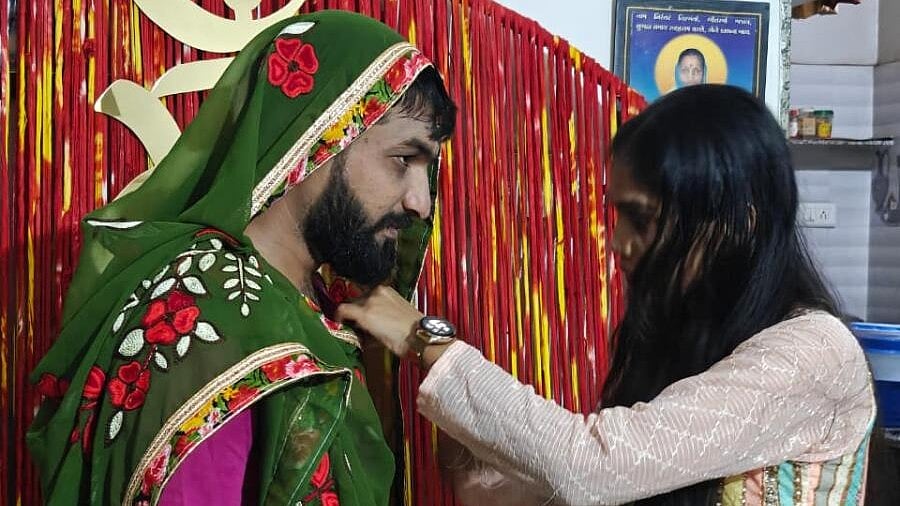
The men perform ‘Saduma na Garba,’ a 200-year-old dance tradition.
Credit: Special Arrangement
Ahmedabad: As the clock struck 10 in the night, the auspicious mahurat began. The men casually chit chatting rose from their seats and started wearing petticoat and draping sarees over their shirts and trousers. The women in the house helped them drape. In the cramped room, men struggled to adjust and tuck them carefully. Once ready, they together stepped out and walked towards the small but brightly decked up temple where devotional music blared at full pitch. They were enthusiastically welcomed by the crowd eagerly awaiting, braving rain and humidity.
On the eight night of Navratri in Gujarat, as garba fever peaked across the state, the walled city of Ahmedabad, locally known as pol, witnessed a ritual unlike others. The men in sarees performed a dance called "Saduma na Garba", a tradition of garba dance said to be continuing for over 200 years old.
According to legend, Saduma was tricked by the ruler of her time that led to her tragic death. Before dying, as the story goes, she killed her child as an act of defiance and anguish against the community members, the Barots, for failing to protect her and cursed them.
Since then, the Barots, famous as bards and genealogists, have beenn performing this Garba to appease Saduma, now a revered deity, and lift her curse. The community sees it as a tradition of devotion, repentance, and remembrance.
"This is our sacred night. I had taken a mannat that if I get married, I would perform this ritual,” said Raj J. Barot, a 21-year-old engineering student. Similarly, Parth S. Barot, a physiotherapist, said he participated for the well-being of his family and the larger community.
While the Barot community sees it as a story of pure devotion, a group women are interpreting the story as a "symbol of gender fluidity." A women’s group "Lal Lipstick", led by academician and stand up comedian Preeti Das and Renu Pokharna, has been organising storytelling sessions around the ritual. They frame it as an act of “gender fluidity,” using performance and conversation to challenge patriarchy.
"This is a 210-year-old ritual which traces back to a curse on the Barot community. On the eighth night of Navratri, the men dress as women, wearing saree, blouse, and petticoat, to atone for the curse said to have been given by Saduma. The legend goes that the community failed to stand by their woman, and since then this ritual has continued. It's a very powerful story," Das said
Over time, several versions of the story have emerged through folklore, with Saduma ni Pol in the walled city of Ahmedabad preserving the heritage. "It is a women centric story being forgotten. We try to recreate the story right near pol to preserve its essence for the outsiders," Das added.